Understanding all the different types of cameras can be a bit daunting. Especially these days when our phones are so good, we might wonder if we even need a camera.
So we’ve put together this short guide to the different types of cameras available. And we’ve chosen some of the best examples of each type for you to choose from.
We’ve even included the best smartphone cameras as well. In case you decide you don’t need anything more than that.
The Best Smartphone Cameras
Let’s start with the best camera phones around at the moment. There are some pretty heavy hitters out there. Your choice might come down to your operating system preference. And that means Apple’s iOS or Android.
Sometimes, you might not have many options. If you use an Apple Watch, then iOS is for you. Or you might be invested in one or other of the “digital ecosystems.” In other words, all Apple or all Google.
The most impressive camera phones out there come from the three biggest manufacturers: Apple, Google, and Samsung.
1. Apple iPhone 15 Pro Max
The flagship phone from Apple boasts up to 48 MP images, improved processing, and a 5x zoom. Excellent video options make it a compelling choice.
Shop Offers
×
Apple iPhone 15 Pro Max 512 GB Blue Deals
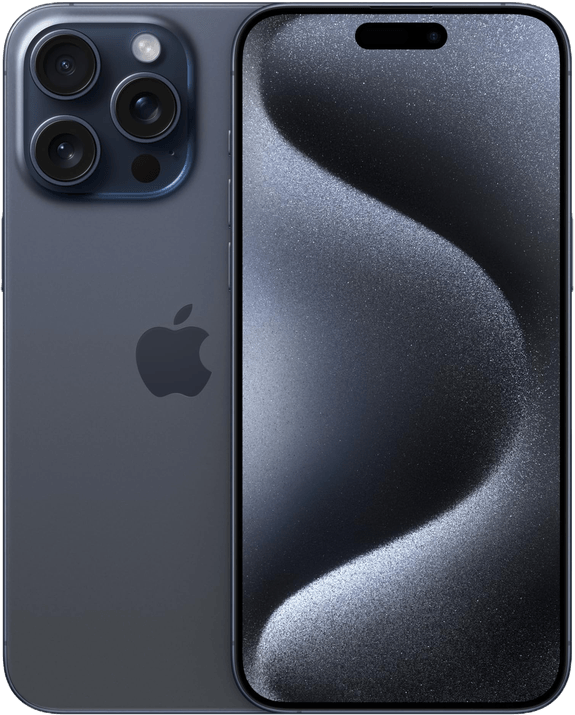
|
(second hand)
Check Price
|
(second hand)
|
Check Price
|
Buy Now!
|
If you buy a product through one of our referral links we will earn a commission (without costing you anything).
Prices last updated on .
As an Amazon Associate, I earn from qualifying purchases. Product prices and availability are accurate as of the date/time indicated and are subject to change. Any price and availability information displayed on Amazon at the time of purchase will apply to the purchase of this product.
Unavailable
Our top pick is the
Apple iPhone 15 Pro Max. This late 2023 model is the flagship of the iPhone family. It has exceptional camera abilities and will be the natural choice for many users. On the downside, it is a bit of a beast physically. If you prefer a smaller phone, the iPhone 15 Pro might suit you better. It’s a more conventional size. But you will sacrifice the 5x telephoto found on the Pro Max.
2. Google Pixel 8 Pro
The Pixel 8 Pro continues Google’s push for smartphone supremacy. Its camera capabilities are truly impressive. It adds some really useful in-camera editing options to an already impressive camera.
Shop Offers
×
Google Pixel 8 Pro Deals
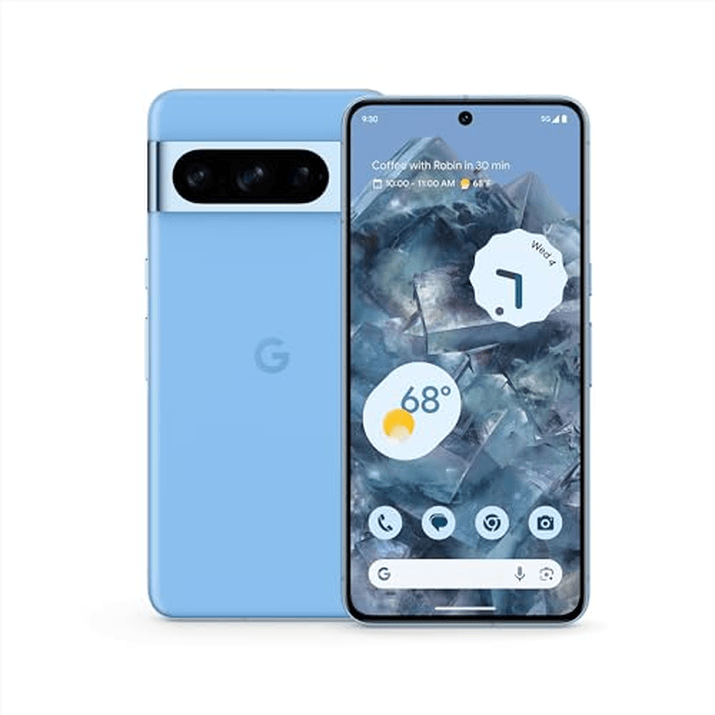
|
(second hand)
Check Price
|
(second hand)
|
Check Price
|
Buy Now!
|
If you buy a product through one of our referral links we will earn a commission (without costing you anything).
Prices last updated on .
As an Amazon Associate, I earn from qualifying purchases. Product prices and availability are accurate as of the date/time indicated and are subject to change. Any price and availability information displayed on Amazon at the time of purchase will apply to the purchase of this product.
Unavailable
Many reviews find the Apple iPhone 15 Pro Max is the best smartphone out there at the moment. But at least an equal number say the same about the
Google Pixel 8 Pro. Opinion is divided because these are both excellent camera phones.
The Pixel uses the purest form of the Android operating system. Google doesn’t overlay an OS like other manufacturers. And why should they? It’s their OS to begin with. Many users find it the cleanest, fastest edition of the OS.
The
Google Pixel 8 Pro has some impressive features and produces superb photos. It also has some nifty in-camera abilities that are unmatched by Apple. For example, if your Uncle Harry closed his eyes just as the shutter went for the family photo, fear not. The pixel will find another picture of his face and edit it in. It’s really impressive.
3. Samsung Galaxy S23 Ultra
Samsung has been producing marvelous camera phones for years. And the Galaxy S23 Ultra is no exception. An amazing pixel count and an astonishing zoom lens make this a solid choice for a smartphone camera.
Shop Offers
×
Samsung Galaxy S23 Ultra Deals
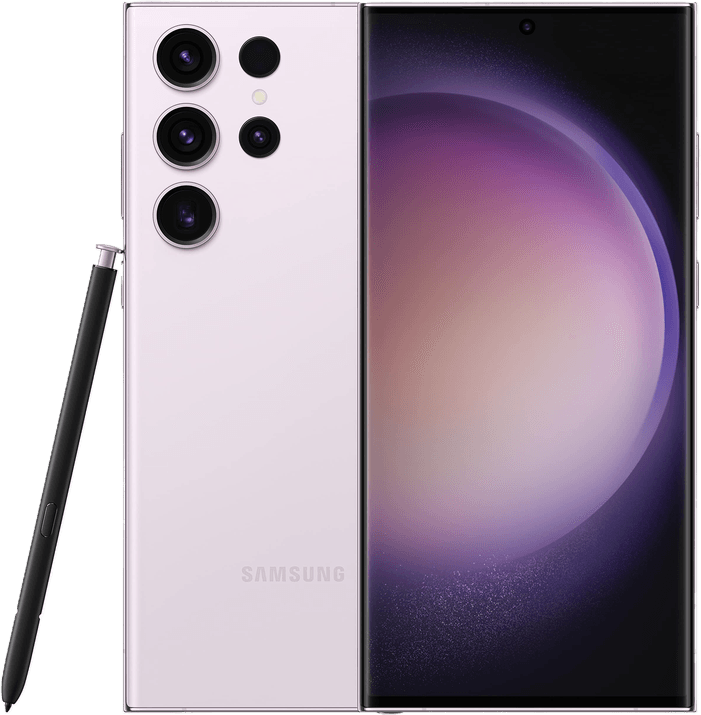
|
(second hand)
Check Price
|
(second hand)
|
Check Price
|
Buy Now!
|
If you buy a product through one of our referral links we will earn a commission (without costing you anything).
Prices last updated on .
As an Amazon Associate, I earn from qualifying purchases. Product prices and availability are accurate as of the date/time indicated and are subject to change. Any price and availability information displayed on Amazon at the time of purchase will apply to the purchase of this product.
Unavailable
The other big hitter to think about in this category is the
Samsung Galaxy S23 Ultra. This gem is a winner for a host of reasons. It comes complete with the S Pen, which stores neatly in the phone.
But perhaps of more interest to photographers are the four cameras, the 200 MP sensor, and a 230mm telephoto lens. Those are some big numbers. And Samsung has a well-deserved reputation for the quality of its cameras and their image processing.
The Samsung OS adds a layer over its Android foundations. And that isn’t to everyone’s taste. But to choose between these three camera phones is a tough call. And it might just come down to which OS you prefer. Or you will find one set of images more to your taste than another.
It’s safe to say that they all produce excellent images.
The Best Compact Cameras
I have two pictures taken at the same place, 15 years apart, that tell a story. The place is looking at the Astronomical Clock in Prague’s Old Town Square. In the first photo in 2007, a host of people look up at the clock, and there is a sea of compact cameras. Fifteen years later, there’s an identical scene, but now it’s a sea of phones and not a single compact camera.
All of this is to say that the compact camera is an endangered species. But there are some excellent cameras out there. They offer more flexibility, control, and capability than even the best smartphones.
Our choice of the top compact cameras offers a range of features that make it worth carrying something extra around with you. And they a smaller and lighter than a DSLR or mirrorless camera.
1. Fujifilm X100V
You won’t find a more stylish compact camera, and this Fujifilm matches style with performance. An innovative viewfinder leads the way, and the f/2 lens captures beautifully crisp images.
Shop Offers
×
Fujifilm X100V Deals
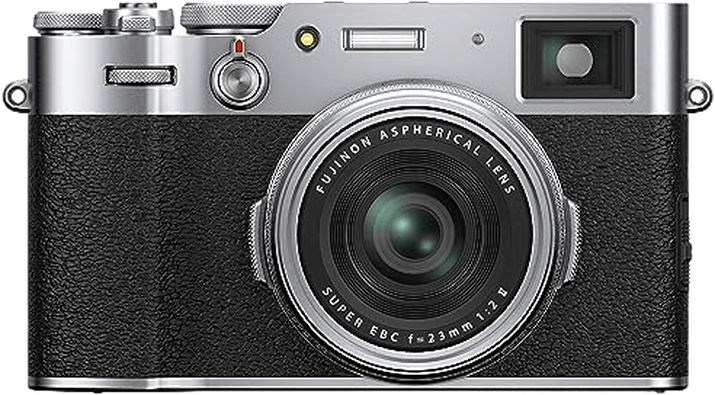
|
(second hand)
Check Price
|
(second hand)
|
Check Price
|
Buy Now!
|
If you buy a product through one of our referral links we will earn a commission (without costing you anything).
Prices last updated on .
As an Amazon Associate, I earn from qualifying purchases. Product prices and availability are accurate as of the date/time indicated and are subject to change. Any price and availability information displayed on Amazon at the time of purchase will apply to the purchase of this product.
Unavailable
The
Fujifilm X100V possesses something unimaginable in a smartphone—an incredible retro look. Brushed metal and leatherette are complemented by properly engraved dials and etched control wheels.
Underneath the retro outer shell is modern technology. There’s a 26.1 MP APS-C sensor and a fast f/2 lens. The most standout feature of the X100V is the brilliant viewfinder. Optical viewfinders are bright and clear, but they don’t show you what the picture will look like with the current settings. Electronic viewfinders solve the latter problem but often flicker or lack brightness.
The
Fujifilm X100V overcomes this, with both available through the same eyepiece. You can choose one or the other, or you can overlay the electronic image over the optical one. It’s brilliant.
Best All Round Compact Camera
2. Canon Powershot G7 X Mark III
Canon compact cameras have been reliable and popular for decades. The G7 brings all of that expertise into a modern, high-spec camera that’s easy to operate and delivers excellent results.
Shop Offers
×
Canon PowerShot G7 X Mark III Deals
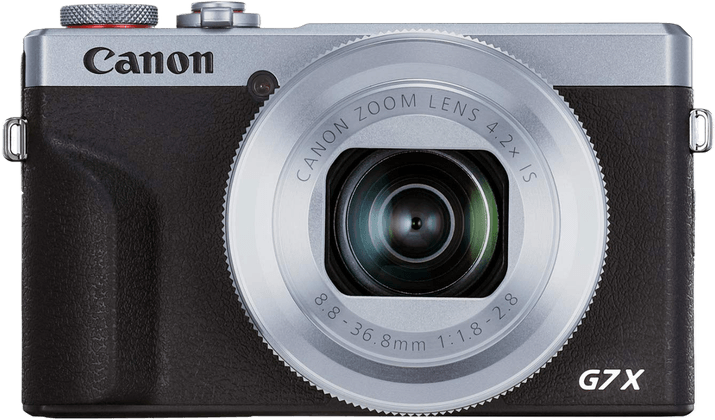
|
(second hand)
Check Price
|
(second hand)
|
Check Price
|
Buy Now!
|
If you buy a product through one of our referral links we will earn a commission (without costing you anything).
Prices last updated on .
As an Amazon Associate, I earn from qualifying purchases. Product prices and availability are accurate as of the date/time indicated and are subject to change. Any price and availability information displayed on Amazon at the time of purchase will apply to the purchase of this product.
Unavailable
The
Canon Powershot G7 X Mark III has some of the retro style of the Fujifilm X100V but is less than half the price. It has a smaller sensor, both in physical size and pixels. But it has a zoom lens and an impressive ISO range of 125 to 128,000.
The 20 MP sensor delivers superb-quality images. And the image stabilization and 4K video add to the all-around appeal of this camera.
Best Compact Camera for Video
3. Panasonic Lumix FZ300
Panasonic Lumix cameras are simple to use and deliver outstanding results. The FZ300 offers an incredible zoom range and hard-to-beat in-body image stabilization. It’s perfect for videographers.
Shop Offers
×
Panasonic Lumix FZ300 / FZ330 Deals
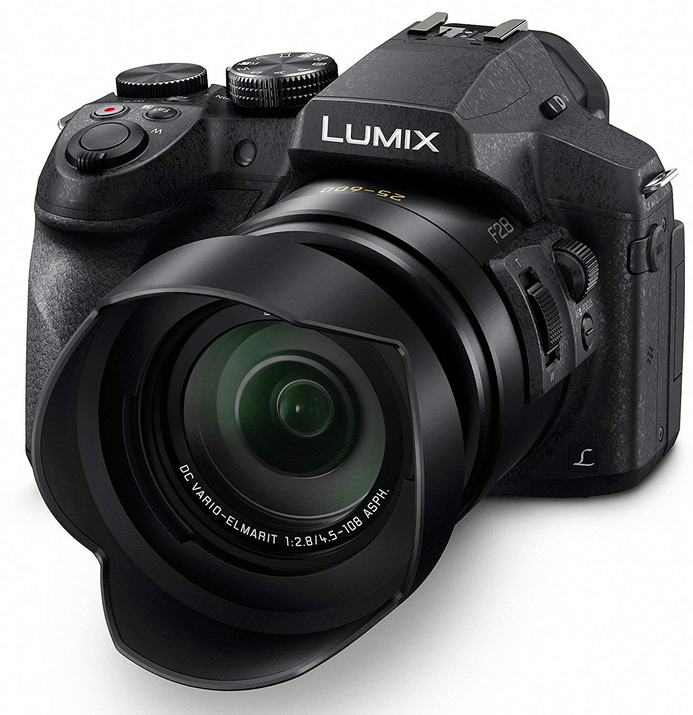
|
(second hand)
Check Price
|
(second hand)
|
Check Price
|
Buy Now!
|
If you buy a product through one of our referral links we will earn a commission (without costing you anything).
Prices last updated on .
As an Amazon Associate, I earn from qualifying purchases. Product prices and availability are accurate as of the date/time indicated and are subject to change. Any price and availability information displayed on Amazon at the time of purchase will apply to the purchase of this product.
Unavailable
Our last pick for a compact camera is the
Panasonic LUMIX FZ300. This is the least expensive of our top picks. And its sensor is not much larger than the best smartphones.
Where it stands out, though, is with its lens. You get a whopping 24x zoom. In full-frame terms, this goes from a decent 25mm wide angle to a 600mm super-telephoto. That’s in the specialist, sports, and wildlife range. And all of this at a constant f/2.8. That’s impressive.
The lens is made by Leica, so expectations are high. And the Lumix does not disappoint. For the money, this is an enticing prospect. The 4K video, 5-axis image stabilization, and solid, splashproof design make this a great performer.
The Best Action and Adventure Cameras
The Panasonic Lumix FZ300 may be splashproof, and your smartphone might boast IP68 ratings. But few of us will want to risk such a device in extreme situations. Or they might be too bulky to take along on our adventures.
These are the exact circumstances that action and adventure cameras were designed for. Perhaps the best-known is the GoPro, but there are several attractive offerings.
1. GoPro HERO12 Black
GoPro almost invented the action camera. They certainly have plenty of imitators. But each year, they push the possibilities of the design. The HERO12 Black combines incredible slo-mo, image stabilization, and ruggedness to make it an outstanding action camera.
Shop Offers
×
GoPro Hero12 Black Deals
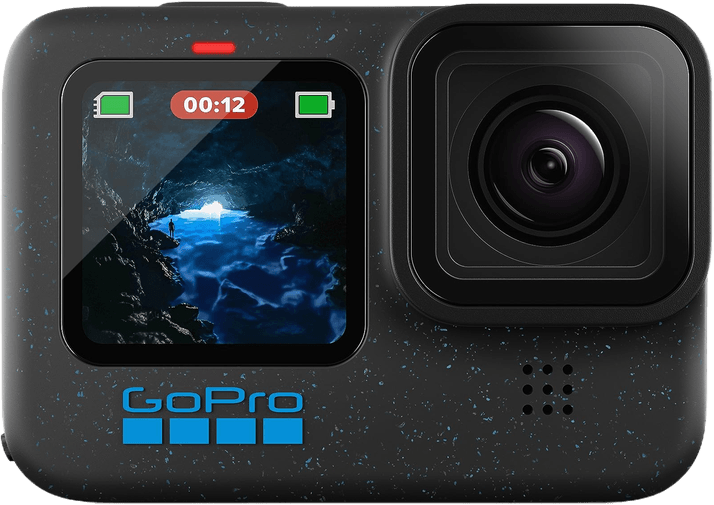
|
(second hand)
Check Price
|
(second hand)
|
Check Price
|
Buy Now!
|
If you buy a product through one of our referral links we will earn a commission (without costing you anything).
Prices last updated on .
As an Amazon Associate, I earn from qualifying purchases. Product prices and availability are accurate as of the date/time indicated and are subject to change. Any price and availability information displayed on Amazon at the time of purchase will apply to the purchase of this product.
Unavailable
The
GoPro Hero12 Black is the latest flagship camera from the action camera specialists. Not everyone is a fan of the processed look that characterizes a GoPro image. But it has some exceptional qualities that make it very popular.
Even without an external housing, the GoPro HERO12 is waterproof down to 33 feet (10m). It is small enough to be worn on your head, chest, or arm (or even your dog!). It has 5.3 K video and possibly the best image stabilization in the business.
It is so easy to mount that you will find it recording everywhere. Car reviewers love it, and in-cockpit flight videos rely on it. The time-lapse and Hyper-lapse help to capture the world in new ways. And the 8x slow-motion capture is loved by extreme sports lovers.
The
GoPro Hero12 Black goes where your phone shouldn’t and brings back memories for you.
Best Compact Action Camera
2. Olympus Tough TG-6
The Olympus Tough TG-6 is a popular camera for good reason. It is easy to hold underwater while wearing gloves, and the built-in lights will help in murkier waters. It’s robust enough to withstand drops and crushing as well. It’s easy to see why it’s so popular.
Shop Offers
×
Olympus Tough TG-6 Deals
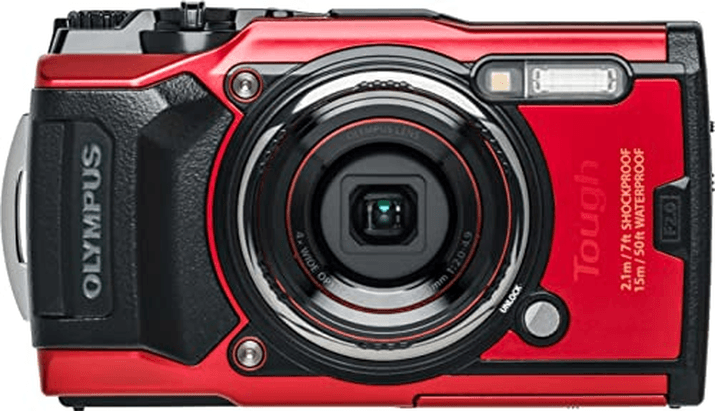
|
(second hand)
Check Price
|
(second hand)
|
Check Price
|
Buy Now!
|
If you buy a product through one of our referral links we will earn a commission (without costing you anything).
Prices last updated on .
As an Amazon Associate, I earn from qualifying purchases. Product prices and availability are accurate as of the date/time indicated and are subject to change. Any price and availability information displayed on Amazon at the time of purchase will apply to the purchase of this product.
Unavailable
A different take on the action camera niche is the
Olympus Tough TG-6. Its form factor means that it could have been included in the compact camera section. But it’s built tougher than that.
First of all, it is waterproof down to 49 feet (15 m), can survive a drop from 6.9 feet (2.1 m), and can survive a crushing force of up to 220 lbs (100 kgs).
The Tough also has a modest but acceptable 12 MP sensor, 4K video, Wi-Fi, and GPS. Two features that make it very different from the GoPro are the built-in LED lighting for underwater shooting and the 4x optical zoom. This is definitely a boost for some shots compared with the very wide angle of the GoPro.
The
Olympus Tough TG-6 is a versatile camera. It’s easy to hold and operate underwater, with a decent sensor size and a good zoom.
3. DJI Pocket 2
DJI makes a whole range of cameras that rely on miniaturization. From drones to action cameras, you’ll find superb images and excellent performance. The Pocket 2 is a real niche camera, and it fills the role with style.
Shop Offers
×
DJI Pocket 2 Deals

|
(second hand)
Check Price
|
(second hand)
|
Check Price
|
Buy Now!
|
If you buy a product through one of our referral links we will earn a commission (without costing you anything).
Prices last updated on .
As an Amazon Associate, I earn from qualifying purchases. Product prices and availability are accurate as of the date/time indicated and are subject to change. Any price and availability information displayed on Amazon at the time of purchase will apply to the purchase of this product.
Unavailable
Another camera that is very different from your smartphone is the
DJI Pocket 2. It’s the perfect camera for walk-and-talk filmmaking or vlogging.
Instead of optical image stabilization, the Pocket 2 has an integrated gimbal. This means there’s no cropping of the image to achieve a steady shot. And the handle makes it easy to use on the go.
Another remarkable feature is the massive 64 MP sensor. Combined with a 240 fps frame rate and 4K video, it’s an impressive package.
The gimbal also allows for sophisticated panning shots and time-lapse videos. The
DJI Pocket 2 offers something that is hard to beat if you want an unobtrusive, rock-steady camera on the go.
The Best DSLR Cameras
There was a time, and it wasn’t that long ago, that the DSLR was the king of the jungle. They were the best balance of size, usability, versatility, and quality. Professional photographers of all stripes used full-frame DSLRs. And discerning amateurs cut their teeth on the APS-C versions with their smaller sensors (and price tags!).
What we are now witnessing is the slow death of the DSLR. Major manufacturers are quietly discontinuing models and focussing their research and development on the mirrorless market.
There are good reasons for this. Done well, the mirrorless camera offers all the benefits of a DSLR, with improved AF, shooting speeds, and automation.
That doesn’t mean that the DSLR is dead, and the vast majority of professionals still use them. But the demise of the DSLR is inevitable.
There are still some phenomenal DSLRs out there. We’ve chosen some high-end ones for you. Partly because the entry-level sector is really now overrun with mirrorless systems. At the other end, there are some incredible DSLR cameras still available.
1. Canon EOS 5D Mark IV
The ESO 5D range of cameras has been keeping photographers happy since 2005. This latest version brings improved video, a touchscreen, Wi-Fi, and GPS to the range. It might well be the last of the 5Ds, but it’s still a great camera.
Shop Offers
×
Canon EOS 5D Mark IV Deals
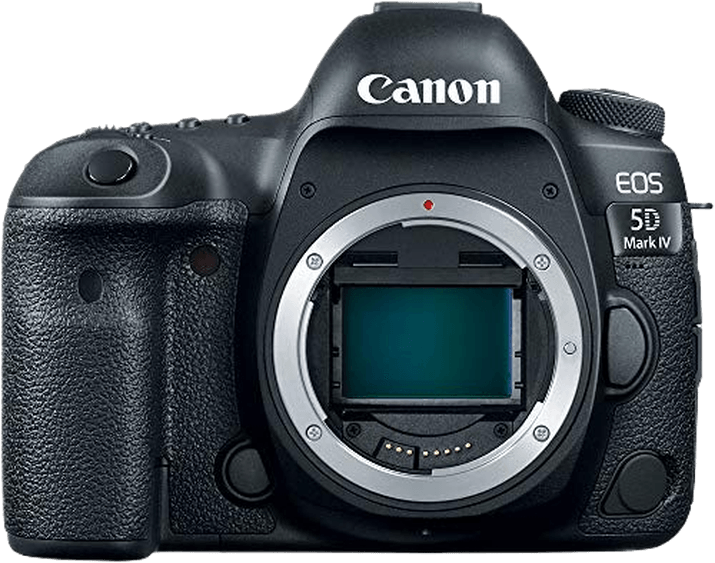
|
(second hand)
Check Price
|
(second hand)
|
Check Price
|
Buy Now!
|
If you buy a product through one of our referral links we will earn a commission (without costing you anything).
Prices last updated on .
As an Amazon Associate, I earn from qualifying purchases. Product prices and availability are accurate as of the date/time indicated and are subject to change. Any price and availability information displayed on Amazon at the time of purchase will apply to the purchase of this product.
Unavailable
The
Canon EOS 5D Mark IV is the latest (and maybe last) DSLR to wear the 5D badge. One step down from the flagship 1D models, it is a pro favorite.
The camera is a beast because it is a big, robust body built to withstand the rigors of daily use. It has an impressive 30.1 MP sensor, 7 fps shooting speed, an eye-watering 102,400 Max ISO, and a big color touchscreen.
Autofocus is impressive, and the low-light performance is great. Video (which is 4K) was a little clunky in the Mark III, but this camera is much better, especially with AF performance.
If you’re looking for a robust, top-quality camera with access to a huge stable of compatible lenses, the
Canon EOS 5D Mark IV is a great choice.
2. Nikon D750
Nikon used to reign supreme in the world of film SLRs. But they lost ground to Canon in the DSLR age. The D750 shows that the differences were often marginal. And it shows why plenty of photographers have stayed loyal to the Nikon brand.
Shop Offers
×
Nikon D750 Deals
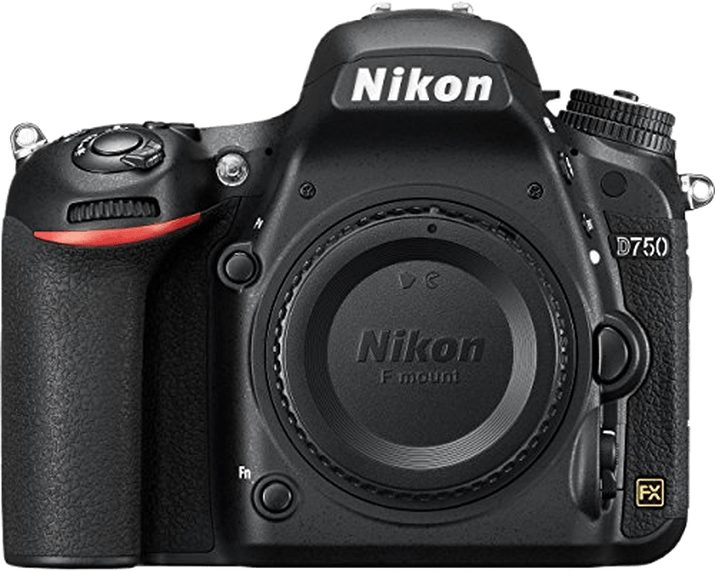
|
(second hand)
Check Price
|
(second hand)
|
Check Price
|
Buy Now!
|
If you buy a product through one of our referral links we will earn a commission (without costing you anything).
Prices last updated on .
As an Amazon Associate, I earn from qualifying purchases. Product prices and availability are accurate as of the date/time indicated and are subject to change. Any price and availability information displayed on Amazon at the time of purchase will apply to the purchase of this product.
Unavailable
Canon’s biggest competitor in the DSLR market is Nikon. And the
Nikon D750 is similar in specs and appeal to the Canon DSLR. It’s a big, solid camera with a 24.3 MP sensor. And it’s designed to keep busy pros happy day in and day out.
The D750 boasts a wider dynamic range than the Canon, and the autofocus is noted for its speed and accuracy. Video is 1080p, which is not quite up to the 5D. But its autofocus works down to -3 EV to make low-light shooting more reliable.
The 6.5 fps shooting speed helps to keep up with the action. And the focus tracking makes it easier to catch fast-moving activity.
The range of available lenses is as comprehensive as with the Canon. And you can be sure that if you get a Nikon D750, it will deliver superb images in demanding circumstances.
The Best Mirrorless Cameras
As we have seen, the mirrorless sector is the main area of growth for the camera industry. Compared to DSLRs, they are lighter and come with better specifications.
If you doubted the manufacturers’ commitment to the camera type, then simply look at how they are investing in it. Canon, for instance, continues to roll out L-series lenses for the mirrorless RF mount. These high-end lenses are a sign that this is the way they see the market going.
The term “mirrorless” covers pro-level and entry-level cameras. We’ve chosen a mixture, and you’ll see both full-frame and APS-C cameras in our recommendations.
Best Mirrorless APS-C Camera
1. Fujifilm X-T30 II
Another winner from Fujilm. This mirrorless camera is compact, powerful, and stylish. The camera takes full advantage of the mirrorless design and delivers crisp, beautiful images.
Shop Offers
×
Fujifilm X-T30 II Deals
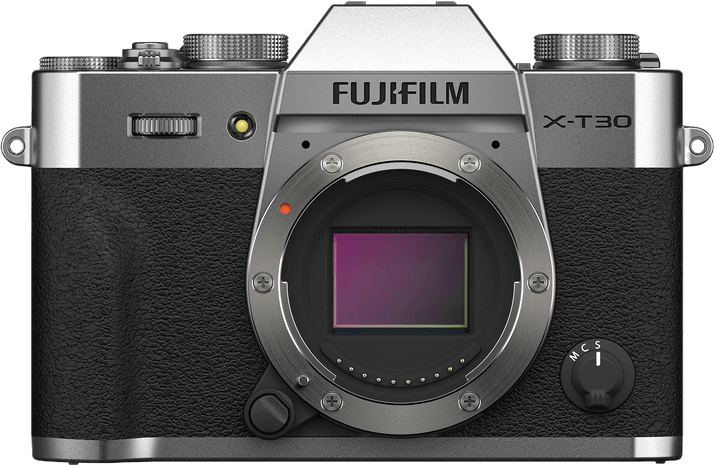
|
(second hand)
Check Price
|
(second hand)
|
Check Price
|
Buy Now!
|
If you buy a product through one of our referral links we will earn a commission (without costing you anything).
Prices last updated on .
As an Amazon Associate, I earn from qualifying purchases. Product prices and availability are accurate as of the date/time indicated and are subject to change. Any price and availability information displayed on Amazon at the time of purchase will apply to the purchase of this product.
Unavailable
The
Fujifilm X-T30 II shares the style notes of the compact X100V. It has proper brushed metal and real dials. But it includes the added versatility of an interchangeable lens system.
The 26.1 MP sensor is impressive, and the Fujifilm is known for producing bright attractive images. When you first pick one up, you might be surprised at how small it is. Because in pictures it looks like an SLR, but is tiny by comparison.
The APS-C
Fujifilm X-T30 II is a superb example of the excellent quality that can be found in mirrorless cameras. Even in this relatively low-cost model, there’s plenty to admire.
Best Nikon Mirrorless Camera
2. Nikon Z6 II
Many people love Nikon’s Z range of cameras. And with the Z6 II, it’s easy to see why. Superb sensor quality and excellent AF help to make this an attractive choice. It’s neat, portable, and of great quality.
Shop Offers
×
Nikon Z6 II Deals
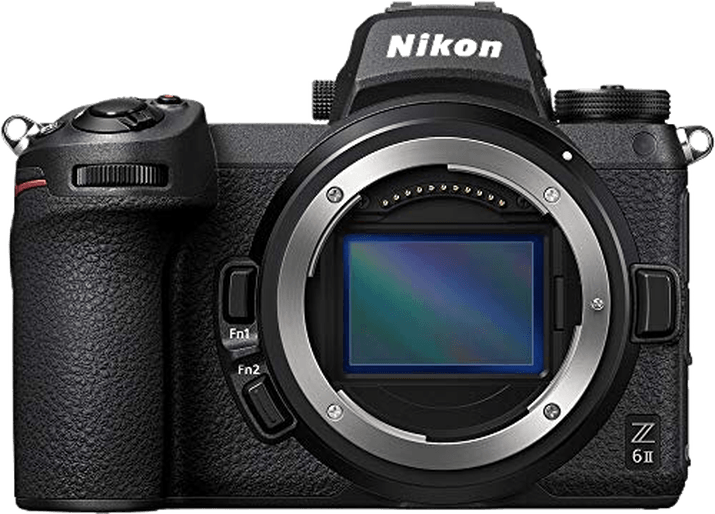
|
(second hand)
Check Price
|
(second hand)
|
Check Price
|
Buy Now!
|
If you buy a product through one of our referral links we will earn a commission (without costing you anything).
Prices last updated on .
As an Amazon Associate, I earn from qualifying purchases. Product prices and availability are accurate as of the date/time indicated and are subject to change. Any price and availability information displayed on Amazon at the time of purchase will apply to the purchase of this product.
Unavailable
The
Nikon Z6 II is a full-frame mirrorless camera. And it sits comfortably in the prosumer sector of the market. There’s plenty here to please the pro photographer and enough to delight the enthusiast.
The 24.5 MP sensor isn’t groundbreaking. But it is good. And it is backed up by a brilliant AF system that uses 273 phase-detection AF points.
In-body stabilization combines with Nikon lenses VR to give excellent control. And many users will love the 14 fps burst speed.
With an ever-growing list of OEM and third-party Z-mount lenses, the
Nikon Z6 II is well worth a look.
3. Canon EOS R5
The R5 takes up the 5D mantle, and wears it with honor. A wonderful 45 MP sensor and fantastic AF performance help to make this a great choice for the enthusiast and pro alike.
Shop Offers
×
Canon EOS R5 Deals
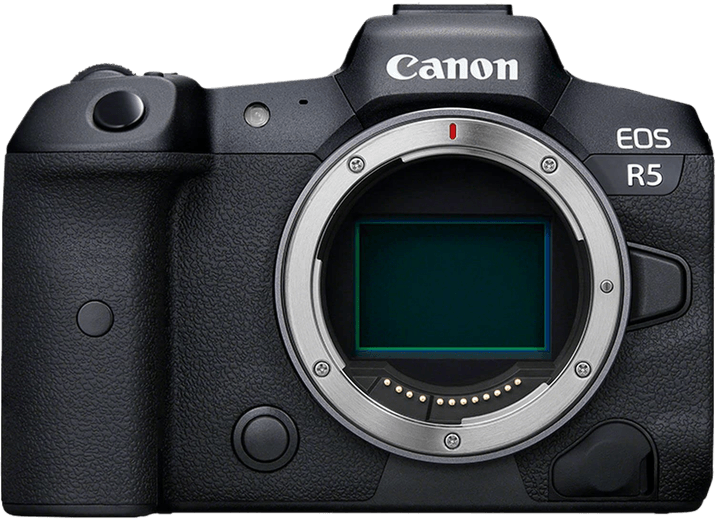
|
(second hand)
Check Price
|
(second hand)
|
Check Price
|
Buy Now!
|
If you buy a product through one of our referral links we will earn a commission (without costing you anything).
Prices last updated on .
As an Amazon Associate, I earn from qualifying purchases. Product prices and availability are accurate as of the date/time indicated and are subject to change. Any price and availability information displayed on Amazon at the time of purchase will apply to the purchase of this product.
Unavailable
For a mirrorless powerhouse, you can try the
Canon EOS R5. It’s not their flagship mirrorless model. But it packs an enormous punch.
Starting with the sensor, you get a massive 45 MP resolution. It can also shoot at 20 fps using the electronic shutter. That’s impressive, but the
Canon EOS R3 can make you look twice with its 195 fps burst speed!
Autofocus is super fast and uses 1,053 AF points across the whole sensor. This is an advantage of the mirrorless design. Autofocus is quicker, and edge-to-edge coverage is a tremendous boost.
The
Canon EOS R5 is as good as the EOS 5D and better in many ways. It outperforms in sensor size, fps, and image stabilization, just to name a few. It’s a great choice for the enthusiast.
The term “medium format” comes from the days of film. When 35mm cameras used a 24 x 35 mm negative, a medium format camera used a 6 x 6 cm film (or, in the case of Bronica, a 6 x 4.5 cm). It’s “medium” because it’s not a full-size plate camera.
And in the days of film, the medium-format camera was the gold standard. David Bailey and Terry O’Neil are some of the famous users. But perhaps Buzz Aldrin and Neil Armstrong are the most famous. Because it was Hasseblad cameras that went to the moon.
Since the arrival of super-detailed full-frame sensors, it was a case of adapt or die for the medium-frame world. We’ve picked a couple of notable cameras for you to see.
Best Medium-Format Camera
1. Fujifilm GFX 50S
This Fujifilm medium-format camera delivers richly detailed images from its 51.4 MP sensor. It is perfect for a landscape or urban photographer.
Shop Offers
×
Fujifilm GFX 50S Deals
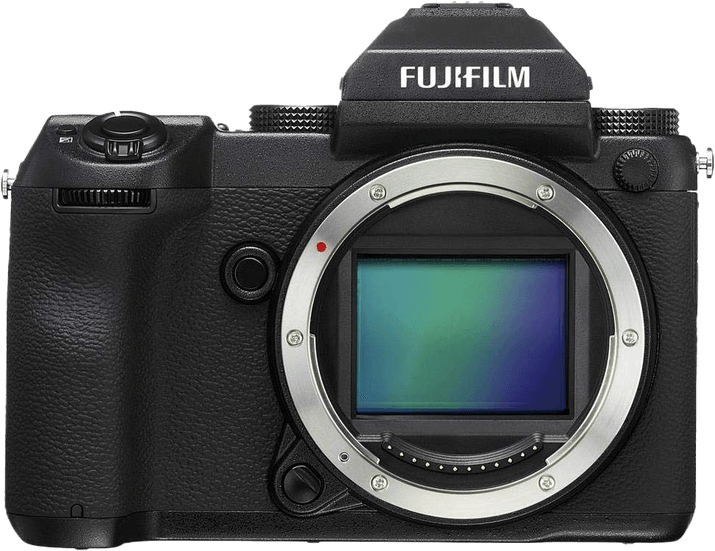
|
(second hand)
Check Price
|
(second hand)
|
Check Price
|
Buy Now!
|
If you buy a product through one of our referral links we will earn a commission (without costing you anything).
Prices last updated on .
As an Amazon Associate, I earn from qualifying purchases. Product prices and availability are accurate as of the date/time indicated and are subject to change. Any price and availability information displayed on Amazon at the time of purchase will apply to the purchase of this product.
Unavailable
It can come as a surprise that Fujifilm makes a medium-format camera. Many people my age saw Fuji as a cheap, point-and-shoot kind of camera. But they have vast experience in making high-end optical devices for industry and medicine. And the
Fujifilm GFX 50S II puts that expertise to good use.
Styled like a DSLR on steroids, the 50S has a 51.4 MP sensor. It’s not a 6 x 6 cm format, but the 43.8 x 32.9 mm size is more than twice the size of a full frame. That extra space allows the pixels to be larger and thus better in low light.
Medium-format cameras are ideal for landscape work, studio portraits, and other genres where the action is slower. The
Fujifilm GFX 50S II makes this sector more affordable than almost any other medium-format camera. And it is a joy to use.
2. Hasselblad X2 100C
There’s an astonishing 100 MP sensor in this Hasselblad. It’s the perfect price-is-no-object landscape or studio camera. If you want to dive into the medium-format world with possibly the best camera of its type, this is it.
Shop Offers
×
Hasselblad X2D 100C Deals
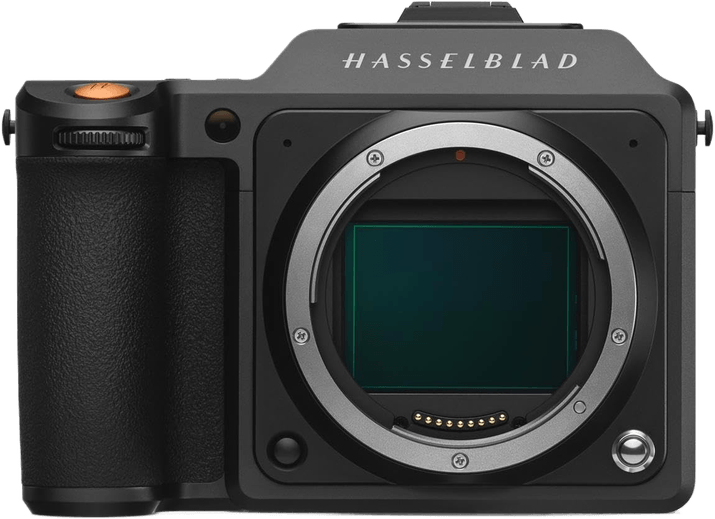
|
(second hand)
Check Price
|
(second hand)
|
Check Price
|
Buy Now!
|
If you buy a product through one of our referral links we will earn a commission (without costing you anything).
Prices last updated on .
As an Amazon Associate, I earn from qualifying purchases. Product prices and availability are accurate as of the date/time indicated and are subject to change. Any price and availability information displayed on Amazon at the time of purchase will apply to the purchase of this product.
Unavailable
The iconic form factor of the classic
Hasselblad 6 x 6 SLR is now a thing of the past. But fantastic medium-format Hasselblad’s are not. The
Hasselblad X2 100C is the latest digital camera from the famous brand.
It boasts an extraordinary 100 MP sensor, delivering an impressive 15-stop dynamic range. With the size of those images, you’ll appreciate the 1 TB of internal storage.
You’ll also love the sheer engineering excellence of this camera. Take it to the studio or out into nature, and you’ll capture images of stunning quality.
The AF won’t amaze you, and there’s no video. But that’s not what medium format photography is about. But the
Hasselblad 6 x 6 SLR is about as good as it gets in handheld digital cameras.
Conclusion
Maybe you’re a beginner, hobbyist, or looking to get into professional-level photography. No matter your level, there are many types of cameras to choose from that will suit your needs. You can even find a variety of cameras for kids.
Take the time to explore the features of several models before narrowing it down to a final choice.















